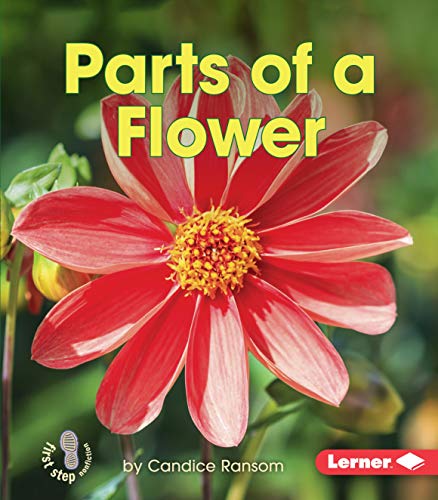-
Animal Pollinators
Jennifer Boothroyd
Paperback (LernerClassroom, Jan. 1, 2015)Many plants depend on animals to help move pollen around so that the plants can reproduce. Readers will see how hummingbirds, mice, bats, and other animals play a big role in pollination. Simple text and supportive photos and diagrams help readers understand key ideas and details about this important science concept. J
J
-
Insect Pollinators
Jennifer Boothroyd
Paperback (LernerClassroom, Jan. 1, 2015)Many insects drink nectar and collect pollen from flowers, and in the process they help plants reproduce. Readers will investigate how bees, butterflies, ants, and other insects assist in pollination. Simple text and supportive photos and diagrams help readers understand key ideas and details about this important science concept. J
J
-
Parts of a Flower
Candice Ransom
Paperback (LernerClassroom, Jan. 1, 2015)The flower is the part of a plant that makes seeds or fruit. Readers will identify the main parts of a flower and learn about the process of pollination. Simple text and supportive photos and diagrams help students comprehend this important science concept. J
J
-
Cross-Pollination
Jennifer Boothroyd
Paperback (LernerClassroom, Jan. 1, 2015)Some plants need to have pollen spread from one plant to another flower in order to reproduce. Readers will learn the steps in the cross-pollination process in this book. Simple text and supportive photos and diagrams help readers grasp key ideas and details about this important science concept. J
J
-
Moon
Melanie Mitchell
Paperback (LernerClassroom, Jan. 1, 2004)The moon lights up the night sky, but the light we see is really from the sun. It’s just reflecting off the moon. The moon is the only place in our solar system that humans have visited. Learn more about our moon in this fascinating book for beginning readers. H
H
-
Animal Pollinators
Jennifer Boothroyd
Library Binding (Lerner Publications TM, Jan. 1, 2015)Many plants depend on animals to help move pollen around so that the plants can reproduce. Readers will see how hummingbirds, mice, bats, and other animals play a big role in pollination. Simple text and supportive photos and diagrams help readers understand key ideas and details about this important science concept. J
J
-
Self-Pollination
Jennifer Boothroyd
Paperback (LernerClassroom, Jan. 1, 2015)Some flowers are able to produce seeds or fruit without getting pollen from another plant. Readers will learn the steps in the self-pollination process in this book. Simple text and supportive photos and diagrams help clarify central ideas about this important science concept. J
J




